

Max Davies
2026 GWM Haval Jolion review
4 Hours Ago

Contributor
As Hyundai gets closer to revealing its Ioniq 7, spy photographers have snapped very revealing photos of the large electric SUV’s interior.
The Hyundai Ioniq 7 prototype was photographed while parked next to a DC fast charger in Europe. It’s due in Australia in the second half of 2024.
Its interior shares some design traits with the new Santa Fe, including its steering wheel, as well as dual 12.3-inch screens situated in the same curved assembly.
The Ioniq 7 does, however, go without the Santa Fe’s climate screen. Instead, there’s a smaller climate panel, and a gap between the dashboard and the centre console.
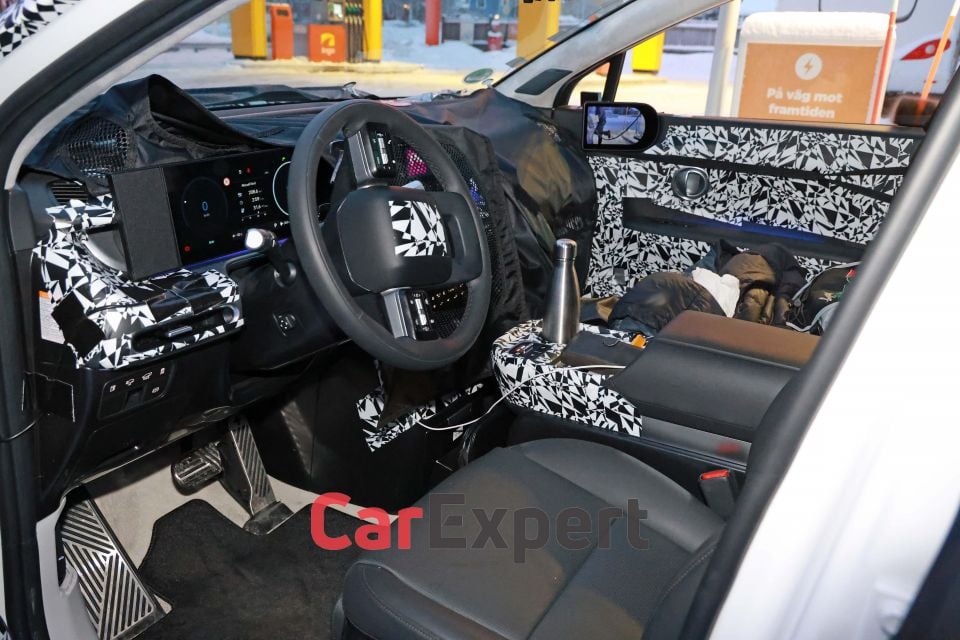
Whether this means the Ioniq 7 will have a moveable centre console like the related Ioniq 5 is unclear.
The centre tunnel features buttons for functions like auto hold, the cameras, and the parking sensors. There’s also a toggle for drive mode selection, but no shifter – that, as with other recent Hyundai products, is instead mounted on the steering column.
This particular prototype also has digital side mirrors.
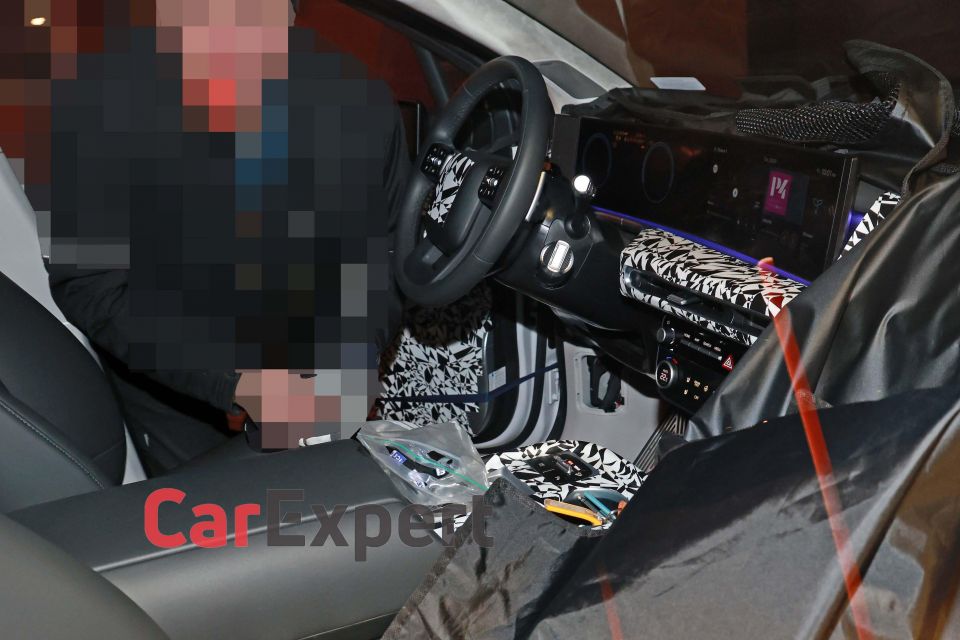
While the production vehicle doesn’t stray too far from the 2021 Seven concept at the front, the back is where there are the most significant differences.
The rear windscreen is larger than on the concept, and a curved LED strip runs across the top of the rear window and flows into larger vertical tail lights.
Previous spy shots have shown the seats and door trims are very similar to those in the Ioniq 5 and Ioniq 6 EVs.
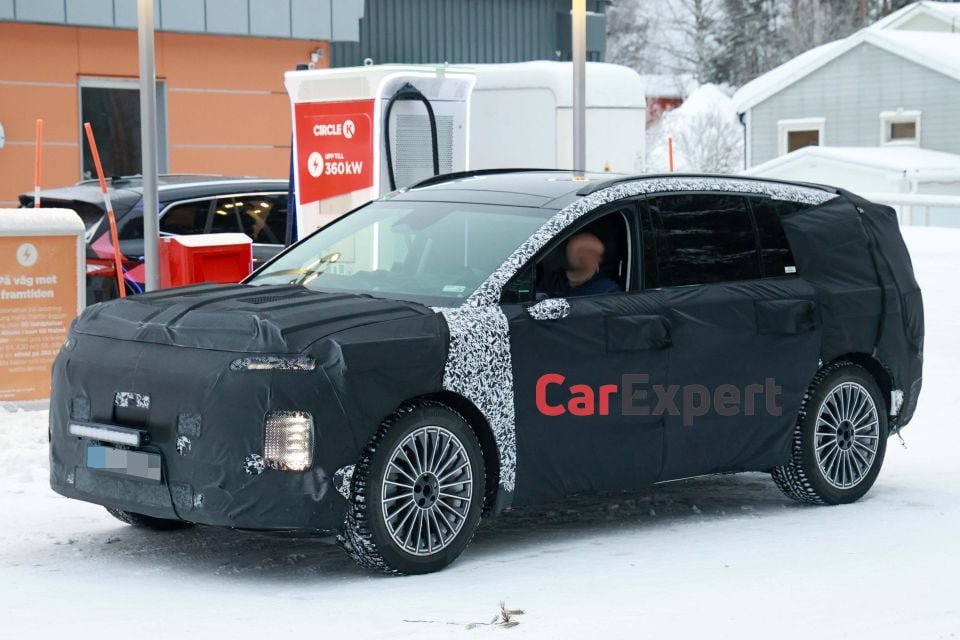
It’s unclear what powertrain options and range the Ioniq 7 will offer however the Seven concept had “more than 480km” of range.
The related Kia EV9, which also uses the dedicated E-GMP electric vehicle platform, opens with a single-motor rear-wheel drive Air variant with 160kW of power and 350Nm of torque.
The claimed 0-100km/h time is 8.2 seconds, while there’s a 76.1kWh lithium-ion battery providing 443km of WLTP range.
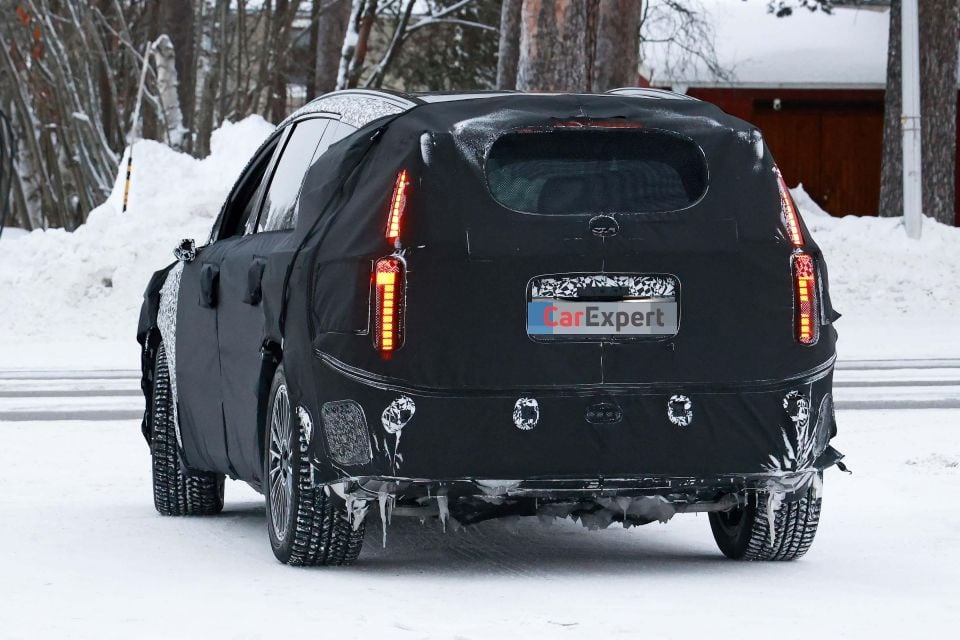
Both the Earth and GT-Line get a dual-motor all-wheel drive drivetrain, with 141kW/350Nm electric motors mounted to each axle – system outputs are 283kW/700Nm.
These AWD models score a Long Range battery with 99.8kWh of capacity granting them WLTP range of 512km.
All EV9s feature an 800V electrical system.
Quoted 0-100km/h acceleration times differ slightly for the AWD models: the Earth takes a claimed 6.0 seconds and the GT-Line cuts that to 5.3 seconds.

Prices for the EV9 start from $97,000 before on-road costs and stretch to $121,000 before on-roads. Therefore we can expect to see pricing for the Ioniq 7 to be in the same ballpark.
Hyundai Australia has previously projected 6000 sales for its Ioniq-branded electric vehicles in 2024.
The Ioniq 7 will form part of Hyundai Australia’s plans to offer an electrified option in all of its SUV segments by the end of the year, joining the Santa Fe Hybrid in the large SUV segment.
MORE: Hyundai Ioniq 7 SUV taking shape ahead of 2024 Aussie arrival
Where expert car reviews meet expert car buying – CarExpert gives you trusted advice, personalised service and real savings on your next new car.
Jade Credentino is an automotive journalist currently based in Melbourne, Australia. Jade has had a chance to review a variety of vehicles and particularly enjoys SUVs. She enjoys traveling and going on road trips exploring Australia.


Max Davies
4 Hours Ago


Damion Smy
12 Hours Ago
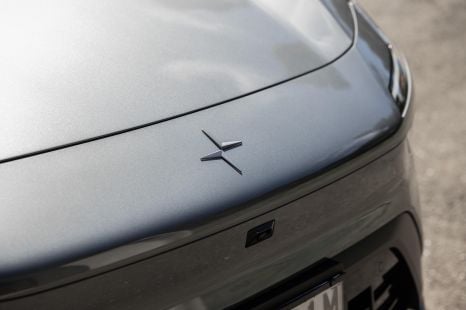

Damion Smy
13 Hours Ago


Damion Smy
14 Hours Ago
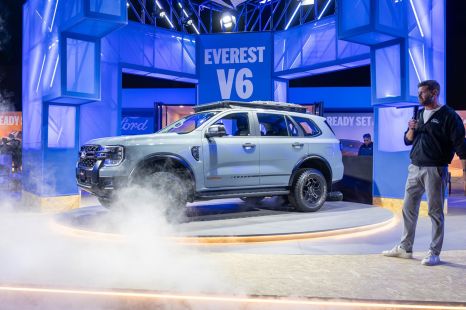

Damion Smy
17 Hours Ago


CarExpert.com.au
18 Hours Ago